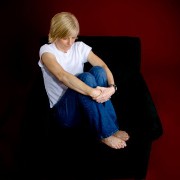(New York -- Dec. 29, 2008) -- Back pain is the most disabling pain experienced by Americans and, according to the National Institutes of Health, eight out of ten people will suffer from it at some time.
But since most back pain is caused by stressed and damaged muscles, there are steps you can take to help prevent it, says pain specialist Norman Marcus, M.D. who is noted for his pioneering work in eliminating back pain without resorting to surgery and mind-altering drugs.
Dr. Marcus, who is dedicated to pain elimination (as opposed to pain management), is Clinical Associate Professor in Anesthesiology and Psychiatry and Director of Muscle Pain Research at the N.Y.U. School of Medicine, a past president of the American Academy of Pain Medicine and founder and medical director of the Norman Marcus Pain Institute.
Here are ten tips from Dr. Marcus to help you prevent back pain in 2009.
1. Your bed does matter. Your muscles require movement to stay healthy and some tossing and turning at night is actually good for you. A sagging mattress that’s lost its resilience inhibits the body’s normal inclination to gently move around during sleep and should be replaced.
2. What you do in bed matters, too, says Dr. Marcus. He strongly advises against reading or watching television while lying down. He points out that when you lift your head to view the screen -- or raise your arms to hold a book -- you generate contractions that can strain your muscles and can cause pain in your neck, head or shoulders. He says the correct way to watch TV or read in bed is to sit up, with your back supported by the headboard and your knees bent.
3. Don’t just sit there. “Our muscles are meant to move,” says Dr. Marcus. Sitting at a computer for hours, or staying in any position for too long, stresses the postural muscles in your body. Try to remember to change positions frequently, even if only briefly, so that your muscles have a chance to move and recover their strength and flexibility.
4. Cross your legs. In a theatre or during a meeting where you realize you’ve been sitting for a long period, and it may not be possible to stand or move around, just cross a leg. And a bit later cross the other. Simply crossing your legs moves many back and hip muscles, which can be major contributors to low back pain.
5. Watch where you put your wallet. Men who sit with their wallet in their back pocket risk severe low back and leg pain by putting undue pressure on nerves and back muscles. A wallet pressing into muscles can seriously irritate them, causing them to tighten up and resulting in chronic pain that can be excruciating, even incapacitating.
6. Just say no. If something appears to be too heavy for you to lift, it probably is. There’s no shame in asking for help to avoid straining or seriously damaging muscles. Rather than lift anything that’s too heavy for you to handle, says Dr. Marcus, “Ask for help, wait for help, hire help – or walk away.”
7. When you do have to lift a heavy object, bend with your knees and hips – not your back. Bring the object close to your body and use your leg muscles (your most powerful muscles), not your back, to do the heavy lifting. And, whenever possible, push (don’t pull) heavy objects, using those leg muscles for power.
8. Your back pain could originate in your head. There is a direct link between stress and tension and back, shoulder and neck pain, says. Dr. Marcus. “Tension produces predictable patterns of muscle contractions which, if sustained long enough, can produce pain. If anger or anxiety are weighing heavily on you, stress reduction activities and relaxation techniques may be your best medicine.”
9. Of computers, keyboards and laptops. Many people place their keyboards on top of their desks, level with their computers, Not a good idea, says Dr. Marcus: “To avoid neck, shoulder and back muscle strain, your arms should be positioned so that you reach down to use the keyboard, which is the reason keyboard trays can be found under desktops. The problem is even greater with laptops, which, Dr. Marcus told the Wall Street Journal, “are inherently unergonomic – unless you’re two feet tall.” He recommends a separate keyboard when hours are spent on a laptop.
10. You can drive pain away. During long drives, your muscles don’t move and can tighten up. Stop the car at regular intervals so you can shift positions. Or, even better, limber up by walking around the car. Also, position the seat close to the pedals and adjust it so that your knees are level with your hips (and you have easy visibility without straining your neck and arms), allowing your low back and hip muscles to function most effectively.
However, if chronic back pain does occur, it should be taken seriously – and treated appropriately, says Dr. Marcus. “With the failure rate for the nearly one million spinal surgeries performed in the U.S. each year as high as 50 percent, it is clear that there has to be better way.”
Dr. Marcus has perfected treatments, based on highly accurate diagnoses and simple exercises, which have significantly reduced or completely eliminated severe back pain in thousands of patients. He has shown that muscles are the primary cause of chronic back pain, which can almost always be treated without resorting to drugs or to spinal surgery that all too often is doomed to fail.




Add a CommentComments
There are no comments yet. Be the first one and get the conversation started!